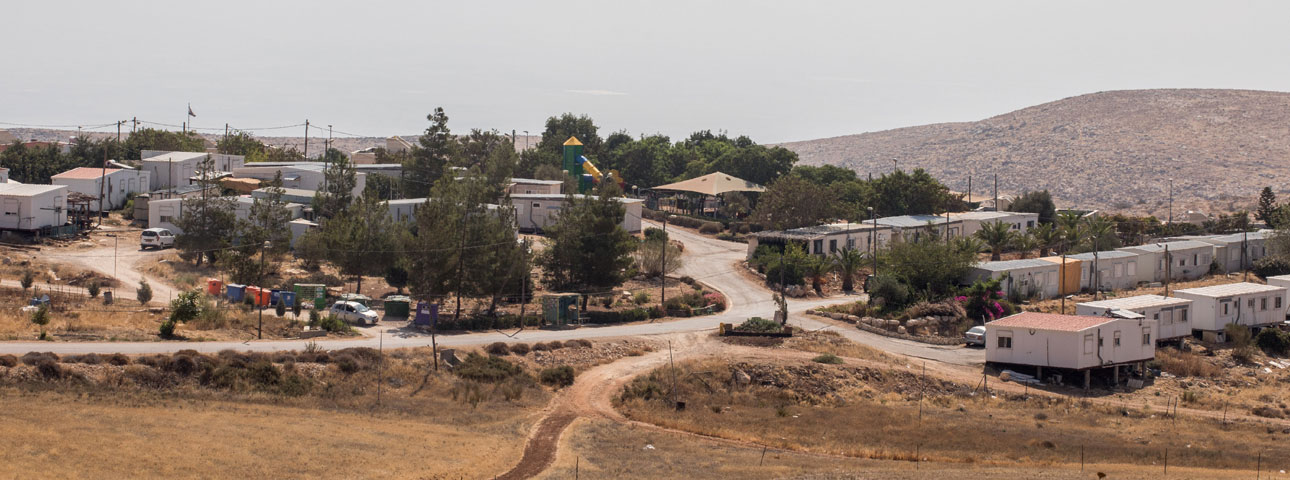When the Supreme Court Struck Down the Regularization Law
Israeli's Supreme Court ruling on the Regularization Law touches on the heart of the legal battle inherent in the power struggle between settlers and Palestinians.

Flash 90
The main novelty in the Supreme Court’s ruling striking down the Regularization Law is the fact that the justices placed the inherent inequality of the balance of power between the settlers and Palestinians in the “territories” at the center of their legal reasoning.
Ever since the 1979 Elon Moreh ruling, which prohibited the expropriation of private land for establishing settlements, Israeli settlements in the “territories” were to be built exclusively on State land. But in 1992–1996, and even more so in 2002–2006, thousands of dwelling units and public buildings in settlements were erected on what was not State land. In some cases, this was an innocent mistake, due to errors in the drafting of the zoning maps; neither the builders nor the residents were aware that the houses were built on private Palestinian land. In most cases, however, the planners and contractors had every reason to be aware that the construction was illegal at the present and in fact could not be legalized in the future, whether because the land was registered as privately owned by Palestinians (in about half the cases) or because no building permits were ever issued.
Massive illegal construction was propelled—sometimes explicitly and sometimes “off the record” — by the heads of regional councils, settlement entities such as the Settlement Division of the Jewish Agency, and quasi-official representatives of the government. All of them encouraged residents and potential residents to believe that the way to go about things was to first-build, and only then- to apply for permits. Over the years it was revealed that much of the construction in the settlements was on privately owned Palestinian land.
What made this conduct possible is the discriminatory power structure that prevails in the “territories.” On one side are the settlers, supported by the Israeli government; on the other –the Palestinians, who do not get to vote and have no political power, who are frequently even denied access to their own land, and are perceived by all official bodies as a potential security threat, and an obstacle to the development of Jewish settlement in Judea and Samaria.
In the course of the decade before the passage of the Regularization Law, the Palestinians began to take advantage of the only channel open to them — petitioning the High Court to put an end to the construction on their land. In several instances, the court intervened and ordered the evacuation of homes; on rare occasions, such as in the case of Amona, it ordered the evacuation of an entire settlement.
The Regularization Law was a particularly aggressive response by the Israeli establishment to the court petitions through which Palestinians hoped to regain their property. The settlers and their political patrons could have contented themselves with attempts to retroactively legalize construction in cases in which there had been an innocent mistake, while evacuating buildings whose illegality was undeniable. Instead, they opted for the most brutal method available to a modern state — wholesale expropriation of private property rights, all so as to legalize the land grabs retroactively. The very fact that such a law could even be considered is the best proof of the intrinsic structural inequality that prevails in the "territories". It is hard to believe that a similar statute would have been passed and applied to any other group, even one with minimal political power.
The court’s ruling clearly endeavors to balance this inequality, at least to some extent; but its invalidation of the Regularization Law does not alter the basic power structure. The Prime Minister has already announced his intention to apply Israeli sovereignty in a manner that includes settlements, but not Palestinian towns and villages. If this plan comes to fruition, the inherent inequality between Israelis and Palestinians will only be exacerbated. The result of such a move is liable to be an even more massive trampling of the Palestinians’ rights. In this case, even the High Court may not be able to help them.
The article was published in the Times of Israel.
